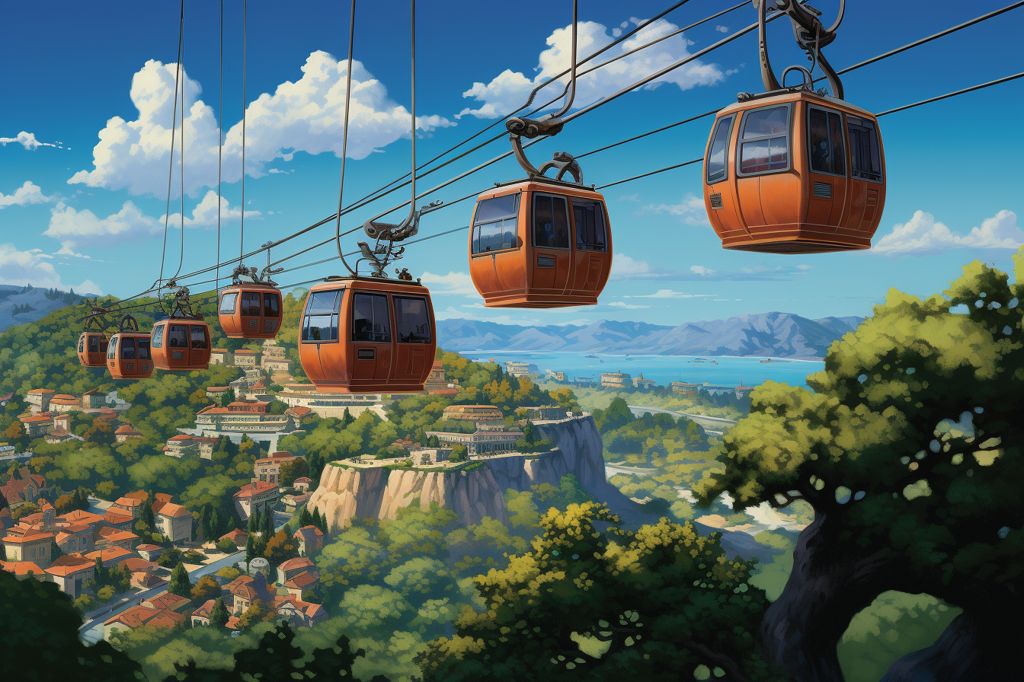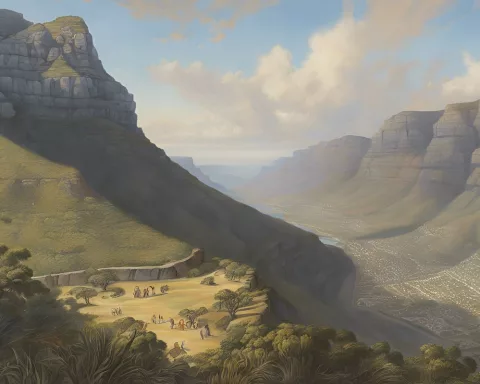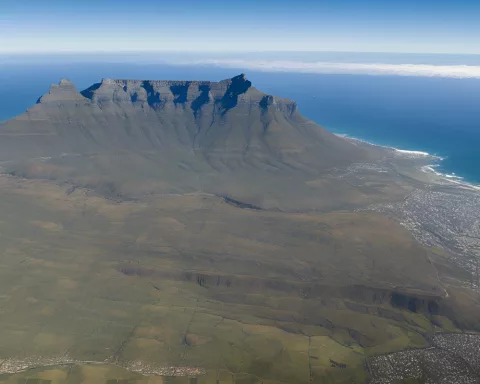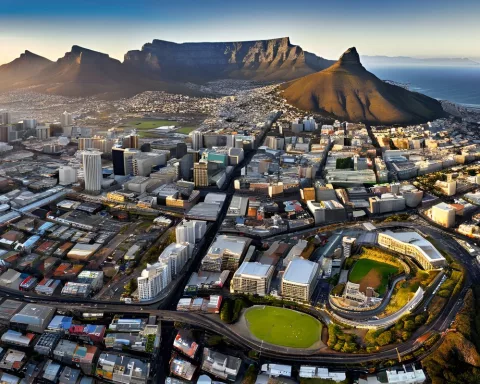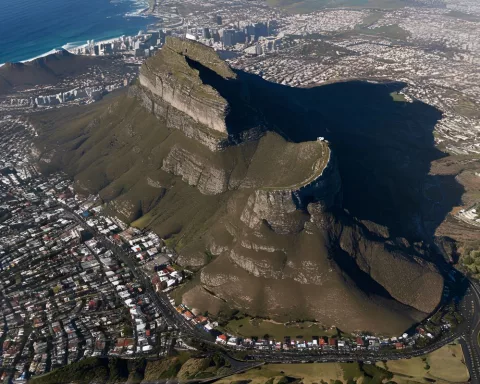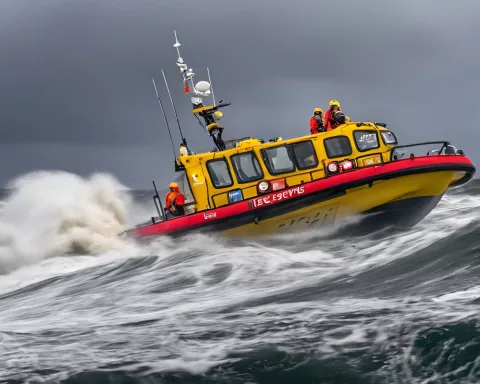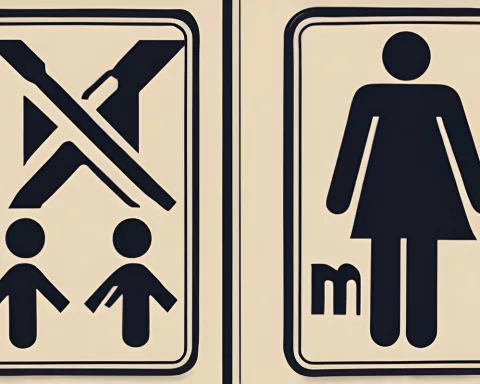Table Mountain is not only a beloved symbol of Cape Town and South Africa but also stands tall as an iconic landmark on the southernmost point of Africa. This majestic natural wonder has captivated both residents and visitors for generations. The Table Mountain Aerial Cableway, while celebrating its 86th anniversary on October 4th, offers breathtaking views of the city and the landscape, transporting an average of 909,000 visitors annually from all over the world. Over its lifetime, more than 24 million people have cherished the view from atop Table Mountain through this service. With three significant upgrades over the years, the cableway has evolved into a flawless fusion of technological sophistication and natural elegance, providing visitors with a timelessly adventurous experience.
How much is table mountain cable car?
Adult tickets are available in two time frames: the morning slot is from 08:30 to 13:00, and the afternoon slot starts from 13:00 until close (Last up 18:00 Last down 19:00). A return ticket in the morning is priced at R420, and it’s R360 in the afternoon. A one-way ticket remains constant at R240 for both periods. For children, the same time frames apply. A return ticket in the morning costs R210, while in the afternoon it’s R180; a one-way ticket is R130 at any time.
South African senior citizens and students have no time restrictions for their ticketing. SA senior citizens can buy a return ticket for R120 or a one-way for R70, and students can get a return ticket for R250 or a one-way for R150 throughout the day. Children under 4 years old are eligible for free rides, regardless of the time.
This actual information for the autumn of 2023.
Table of contents:
- A Stroll Through History: The Origins of Table Mountain Aerial Cableway
- Upgrades of the Table Mountain Cableway
- The Contemporary Cableway Experience
- Interesting Facts about Table Mountain Cableway
- How to get to table mountain cable car?
- FAQ: Table Mountain and Its Aerial Cableway
(video by capetown.today)
Table Mountain, a cherished emblem of Cape Town and South Africa, has always been a center of admiration. Standing proudly over the cityscape, this mountain is one of the most photographed sites globally. Its rich history, combined with its designation as one of the New7Wonders of Nature in 2011, after receiving over 100 million votes, underlines its significance on a global scale. The mountain’s status is further amplified by being the only wonder nestled within an urban setting, showcasing nature’s brilliance amidst human civilization. This article delves into the captivating journey of Table Mountain and its Aerial Cableway, highlighting its numerous transformations to achieve its modern-day splendor.
A Stroll Through History: The Origins of Table Mountain Aerial Cableway
The roots of the Table Mountain Aerial Cableway stretch back nearly a century. The concept of facilitating access to the mountain’s summit dates back to the late 1870s when plans for a railway were initially proposed. Ideas, such as a funicular railway running through the Platteklip Gorge from Oranjezicht, were considered. However, these remained dormant until 1926. It was then that the Norwegian engineer, Trygve Stromsoe, put forth the idea of a cableway. He built a model to bring his vision to life and successfully garnered the support of influential businessmen: Sir Alfred Hennessy, Sir David Graaff, and Sir Ernest Oppenheimer. Their collective efforts led to the birth of the Table Mountain Aerial Cableway Company, with its public inauguration on October 4, 1929.
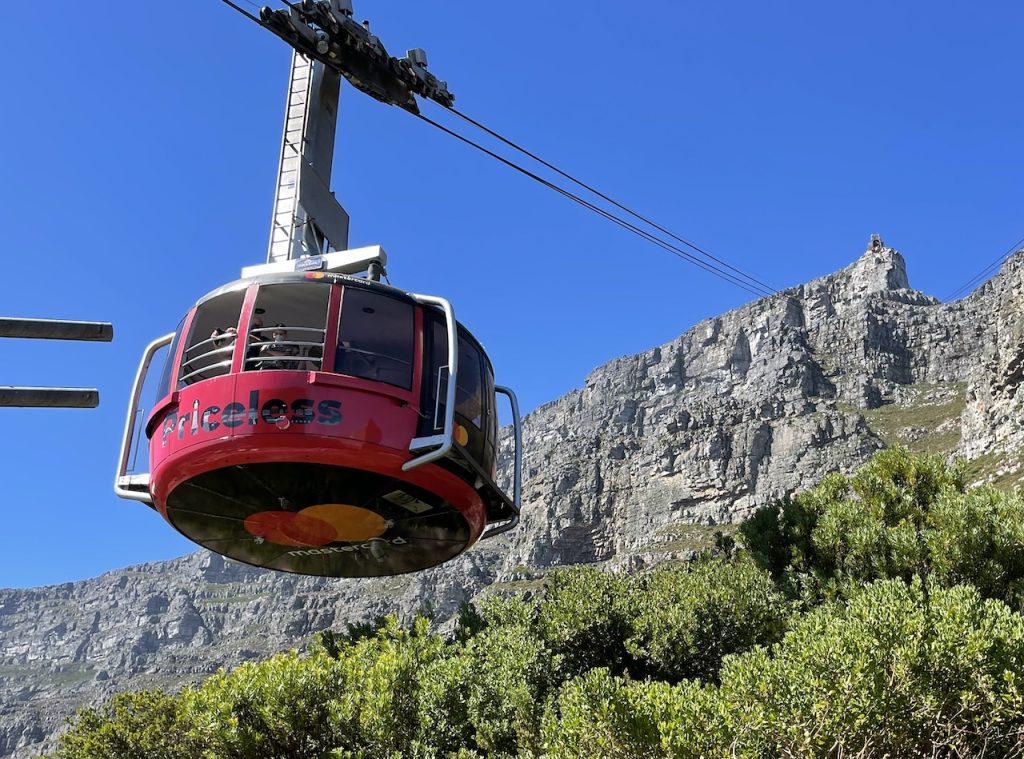
From the outset, the cableway played a pivotal role in accentuating Table Mountain’s charm, offering unmatched vistas of the city and landscape. The cableway has always prioritized safety, preserving an accident-free record since its inception, an enduring testament to meticulous planning, engineering, and maintenance.
Upgrades of the Table Mountain Cableway
The First Upgrade: 1958
By 1958, the cableway had operated for almost three decades and had already become an indispensable aspect of Cape Town’s identity. The first substantial upgrade introduced larger cable cars, with the ability to hold 23 passengers and an attendant, weighing roughly three tons when completely full.
These new cable cars included an auxiliary, diesel-powered engine situated in the Upper Cable Station, intended to take over in case of a power outage. The journey from the lower station to the top station took about eight minutes, and these cable cars continued service until 1974. Over their 16-year run, they transported two million passengers and maintained an accident-free safety record.
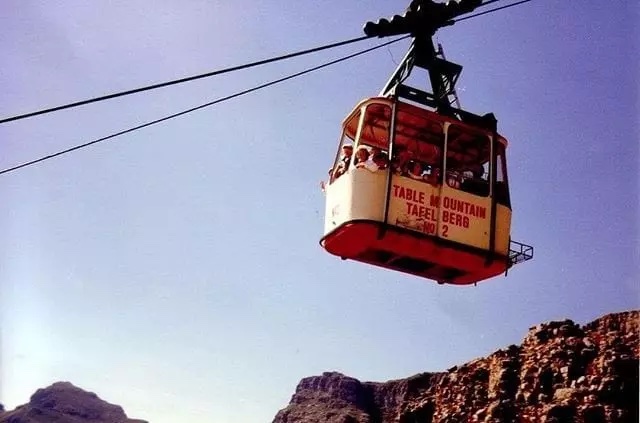
The Second Upgrade: 1974
The next stage of the cableway’s evolution occurred in 1974, with the implementation of lighter cable cars that could hold up to 28 passengers. These cars represented another advancement in technological innovation, ensuring that the cableway remained a state-of-the-art attraction for visitors.
The Third Upgrade: 1997
The latest cableway upgrade transpired in 1997, with the introduction of cutting-edge cable cars featuring rotating floors. This inventive design permitted passengers to appreciate a 360-degree panorama of the city and mountain while ascending and descending, further enriching the cableway experience. These modern cable cars could comfortably carry 65 passengers, a substantial increase from their forerunners.
The Contemporary Cableway Experience

Today, the Table Mountain Aerial Cableway has matured into a flawless fusion of technological sophistication and natural elegance. Cable car rides now operate every 10 to 15 minutes and move at a gentle pace, requiring about five minutes to arrive at the summit. This unhurried speed grants passengers plenty of time to take in the awe-inspiring scenery that surrounds them.
Weather permitting, visitors can revel in the magnificent views of Cape Town and its surroundings from the cableway, with the journey itself becoming a fundamental component of the overall experience.
A Celebration of Human Resourcefulness and Nature’s Grandeur
Table Mountain and its Aerial Cableway are living testaments to human innovation and nature’s majesty. As we reflect upon our shared legacy, we pay tribute to the unyielding endeavors of countless individuals who have strived to preserve and elevate this iconic landmark over the decades. The Table Mountain Aerial Cableway embodies the spirit of adventure, wonder, and appreciation for the natural world, a legacy that will continue to inspire for generations to come, symbolizing pride and unity for Cape Town and South Africa.
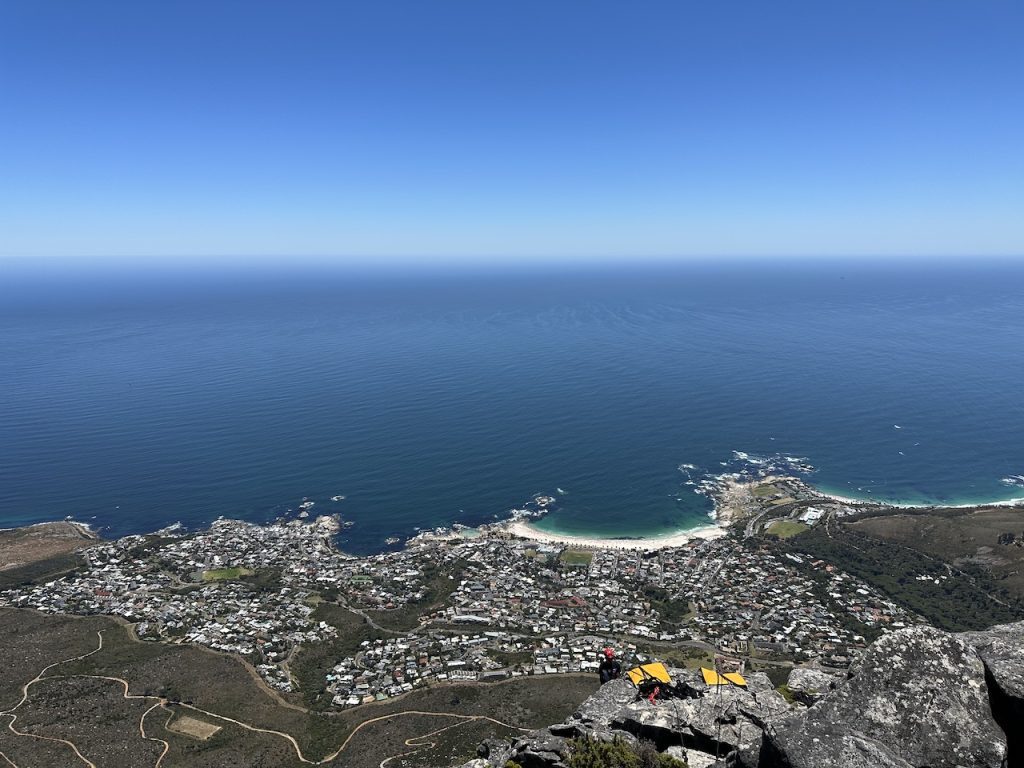
Table Mountain, a proudly cherished emblem of Cape Town and South Africa, has enthralled the hearts and minds of both residents and travelers for many, many years. Proudly standing above the city, Table Mountain has turned into one of the most photographed sites in the world. Its rich history and ongoing evolution over the past 90 years demonstrate human innovation, determination, and the timeless appeal of natural splendor. This article delves into the captivating history of Table Mountain and its Aerial Cableway, highlighting the numerous transformations it has experienced to become the modern wonder it is today.
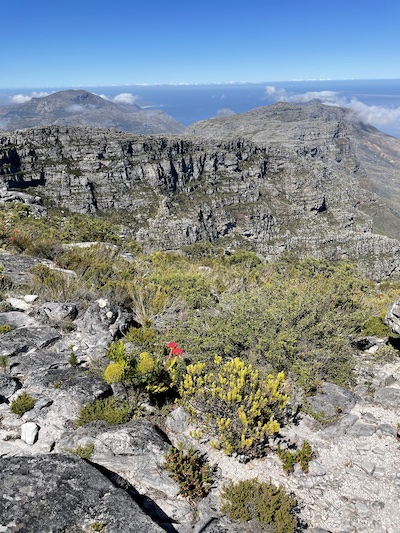
Interesting Facts about Table Mountain Cableway:
- Table Mountain is a prominent landmark on the southernmost tip of Africa.
- The Table Mountain Cableway celebrated its 86th anniversary on October 4, although its history goes back to the 1870s.
- Original plans for accessing the mountain’s summit included a railway, specifically a funicular railway running through Platteklip Gorge from Oranjezicht.
- The idea for the cableway was conceived by a Norwegian engineer, Trygve Stromsoe, in 1926.
- Stromsoe built a model of the cableway to visualize and promote his concept.
- Influential businessmen like Sir Alfred Hennessy, Sir David Graaff, and Sir Ernest Oppenheimer backed Stromsoe’s vision.
- The Table Mountain Aerial Cableway Company was established, leading to the public unveiling of the Cableway in 1929.
- The Cableway offers a spectacular view of the city, including the luxurious 5-star Table Bay hotel.
- Every year, the Cableway transports an average of 909,000 visitors from all over the globe.
- In total, over 24 million people have enjoyed the view from atop Table Mountain via the Cableway.
- The Cableway has an outstanding safety record with zero accidents since it began operating in 1929.
- There have been three major system upgrades: in 1958, 1974, and 1997.
- The 1997 upgrade saw the introduction of the Rotair cable cars, a unique system found in only three places worldwide.
- The Rotair cable cars can carry 65 passengers, offering them a 360° panoramic view during a quick 4 to 5-minute journey.
- The cable cars can travel at speeds of up to 10 meters per second.
- Table Mountain proudly became one of the New7Wonders of Nature in 2011 after a global campaign that started in 2007.
- The mountain received an overwhelming 100 million votes to earn this prestigious recognition.
- Table Mountain shares the New7Wonders of Nature title with world-renowned sites like the Amazon, Halong Bay, Igazú Falls, Jeju Island, Komodo, and the Puerto Princesa Underground River.
- Of all these natural wonders, Table Mountain is unique as it’s the only one situated within an urban environment, juxtaposing natural beauty with urban charm.

How to get to table mountain cable car?
To reach Table Mountain’s Cableway, you have multiple options:
- Public Transport: Use the MyCiTi bus route 106 or 107, which departs from the Civic Centre in Hertzog Boulevard and stops at Kloof Nek Road. You’ll need a myconnect card loaded with funds; cash is not accepted. Children under four and under one metre tall travel free.
- City Sightseeing’s Hop-On, Hop-Off Bus: This service runs every 20 minutes, offering a 90-minute round trip starting at the Two Oceans Aquarium. It stops at key attractions before reaching the Cableway. One-day tickets are R220 and two-day tickets are R320.
- Meter Taxis: Available throughout the city and charge R10 to R20 per kilometre. Always good to negotiate and get an estimate beforehand. Companies include Rikkis Taxis, Marine Taxis, and Excite Taxis.
- Uber or Bolt: These app-based services operate in Cape Town. Multiple options like uberBlack, uberX, Bolt XL, and Bolt Go are available. Be cautious if you’re planning on using these services after sunset as wait times can be longer and conditions may be colder.
Remember, after sunset, buses might not be available, but Uber is an option, though there might be a wait time of approximately 15 minutes.
Table Mountain Cable Car Photos
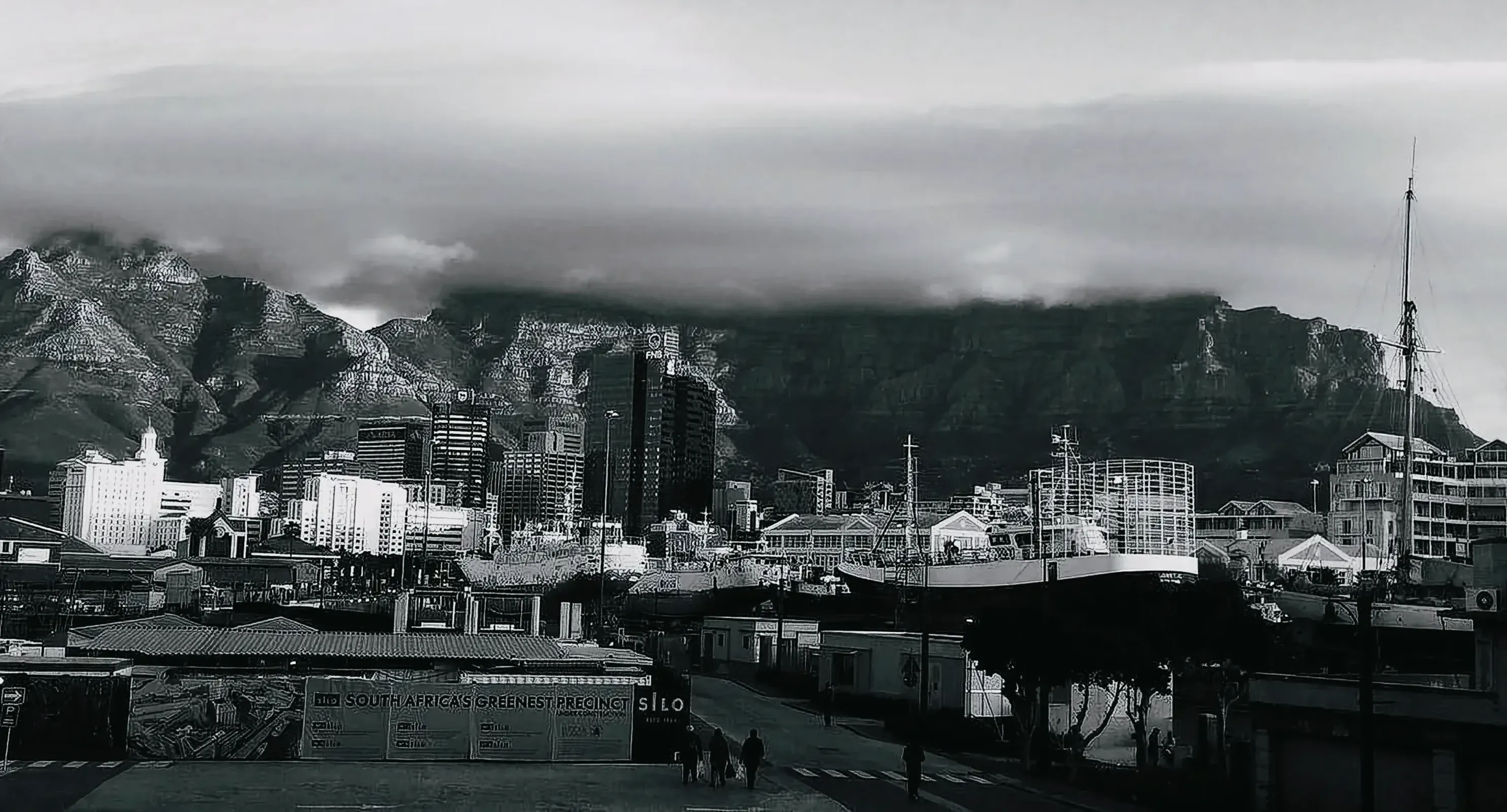

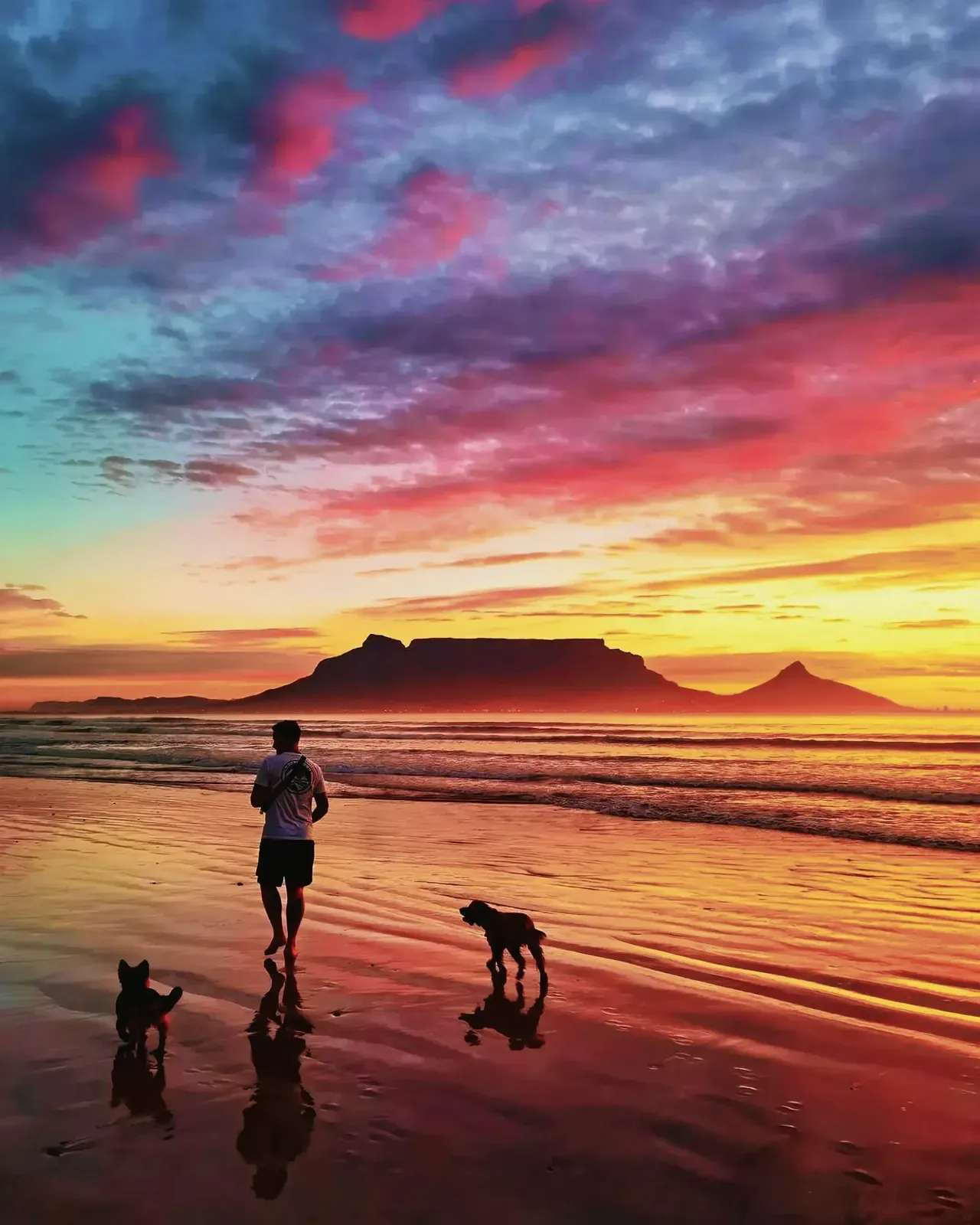
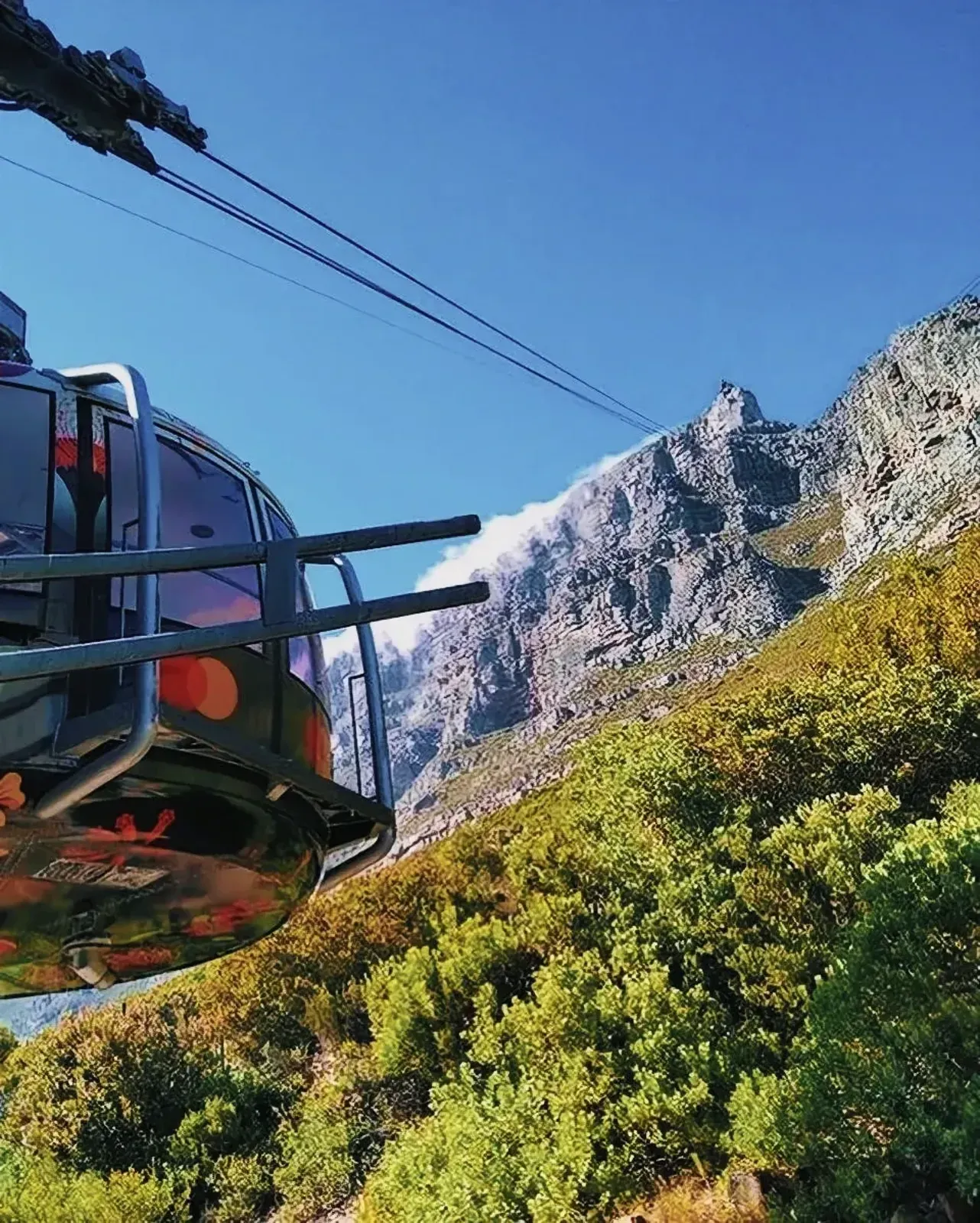
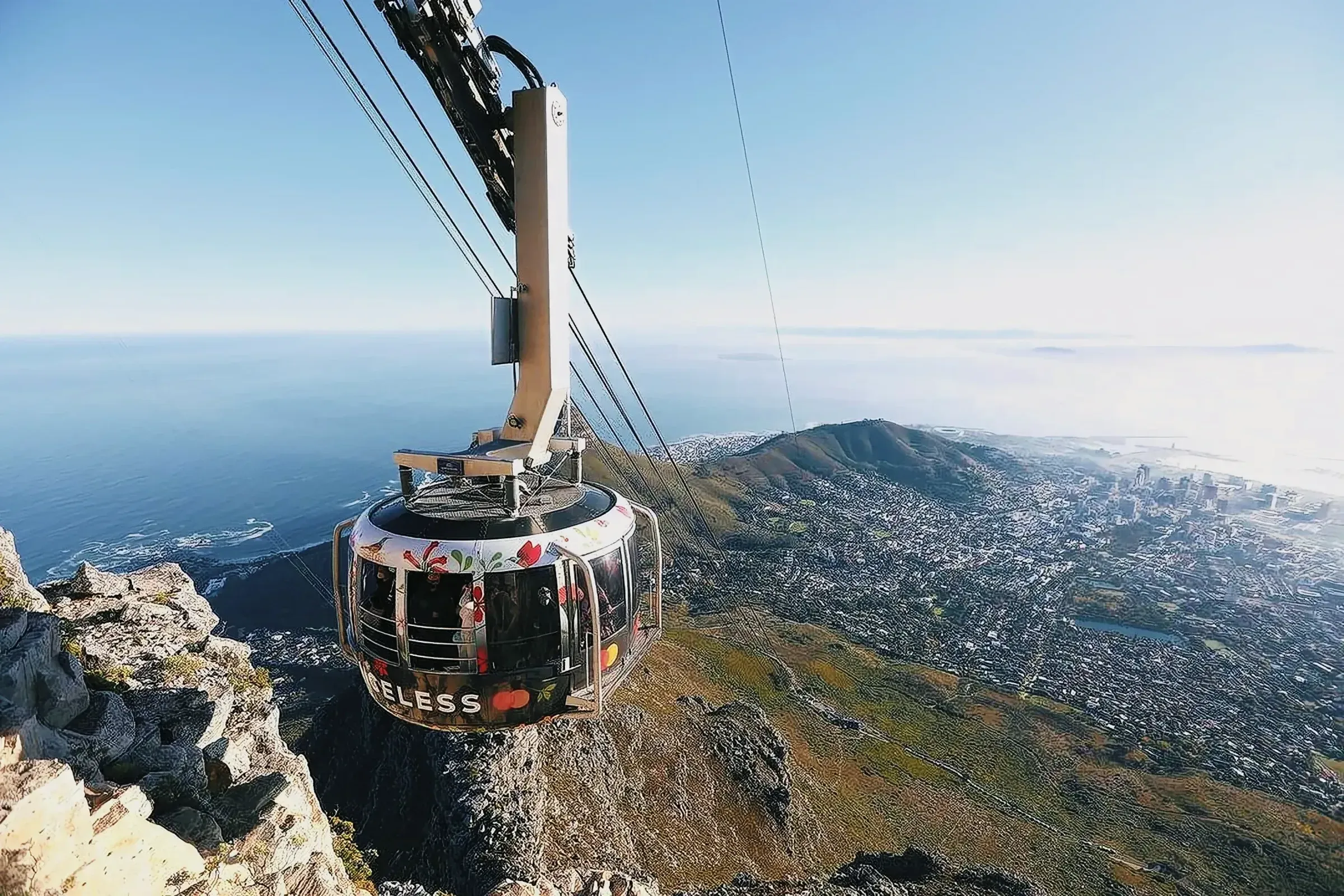
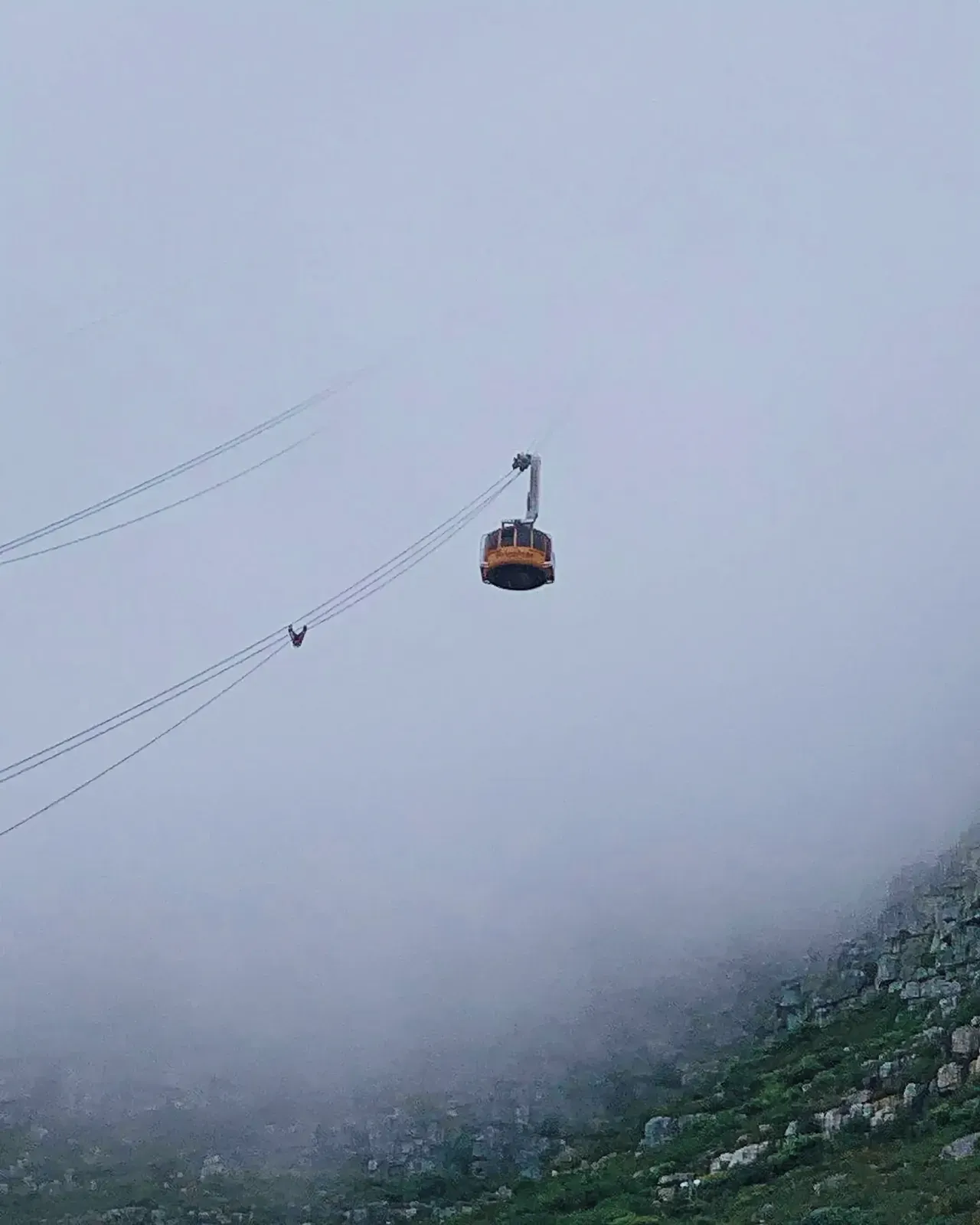
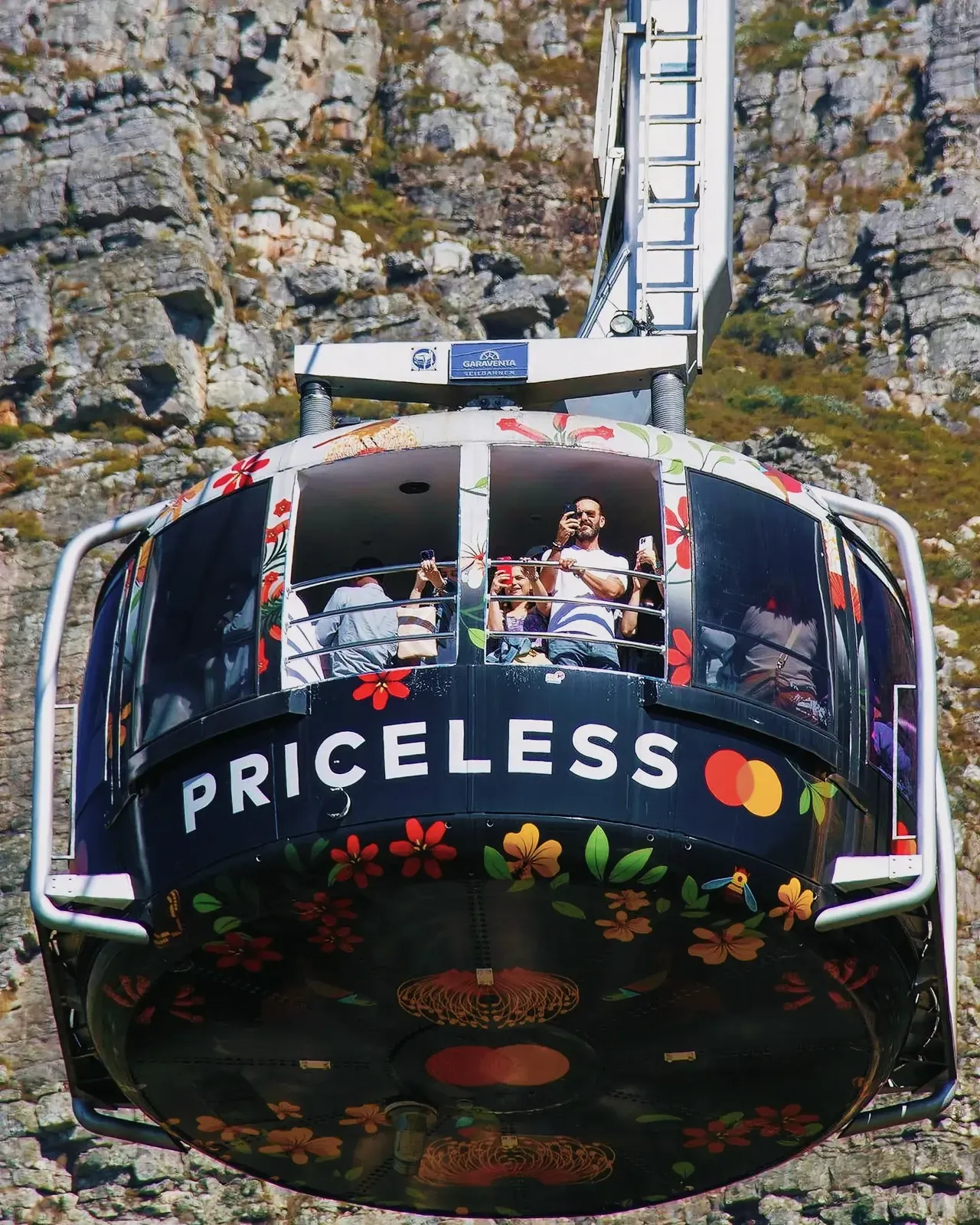
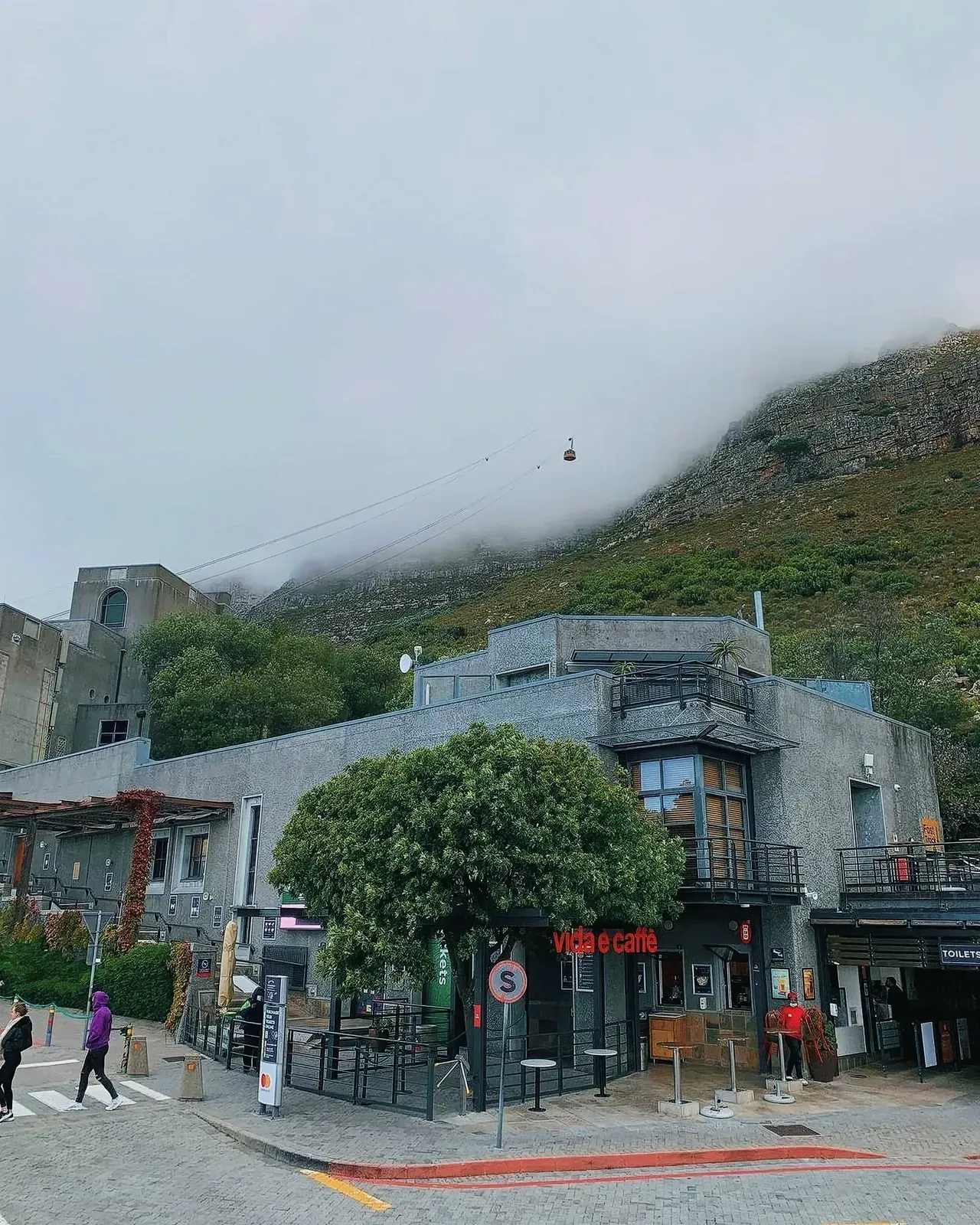

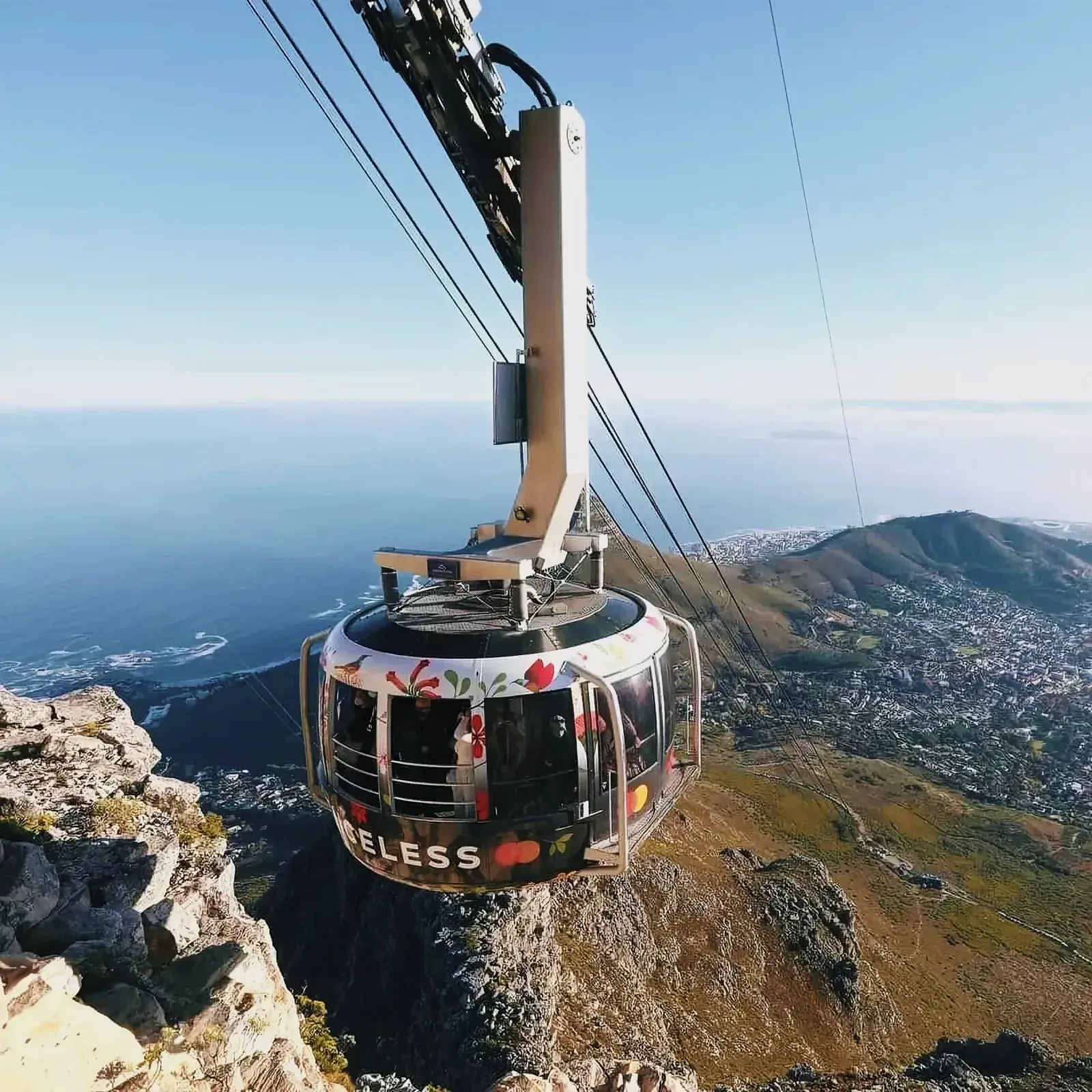
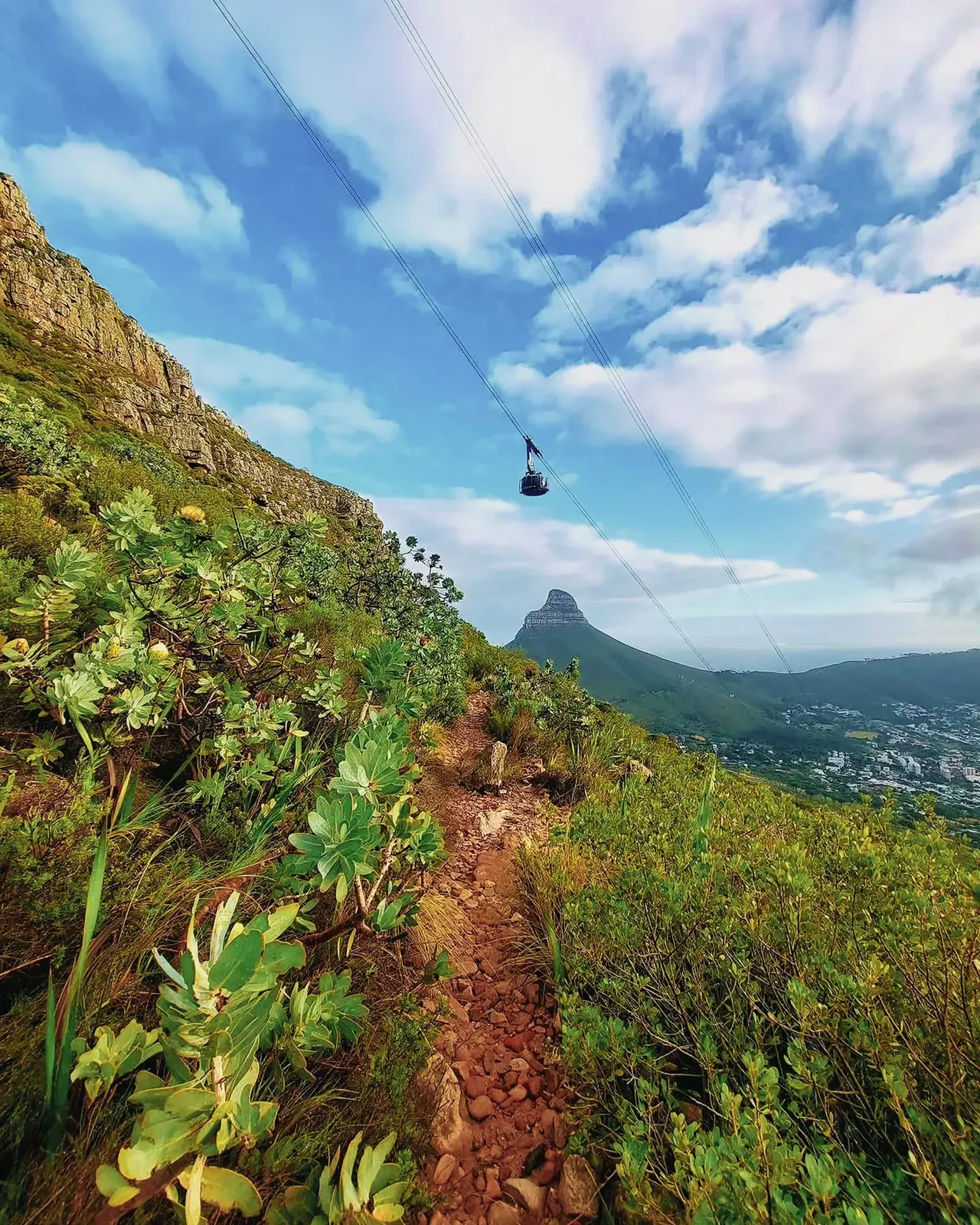
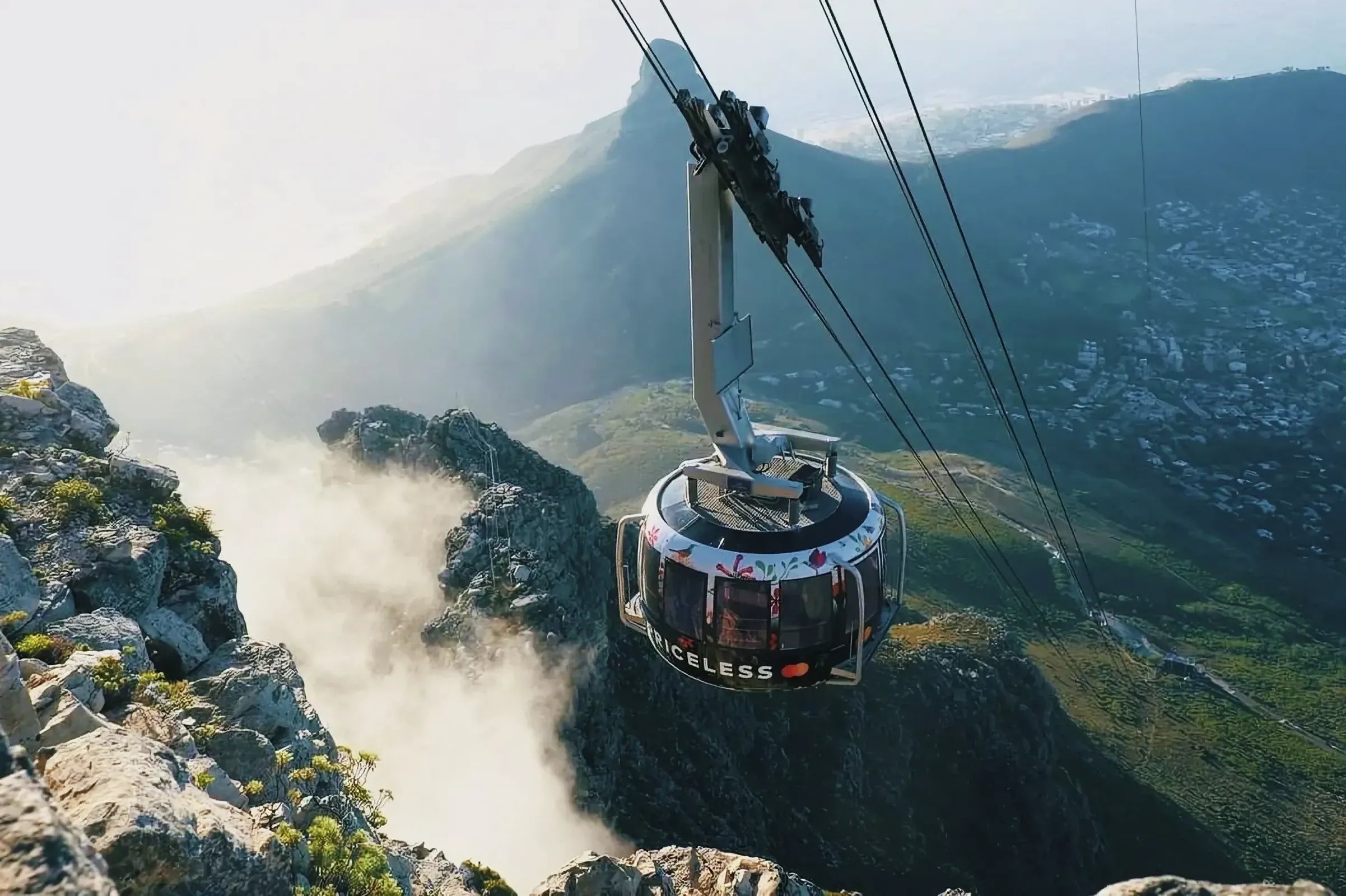
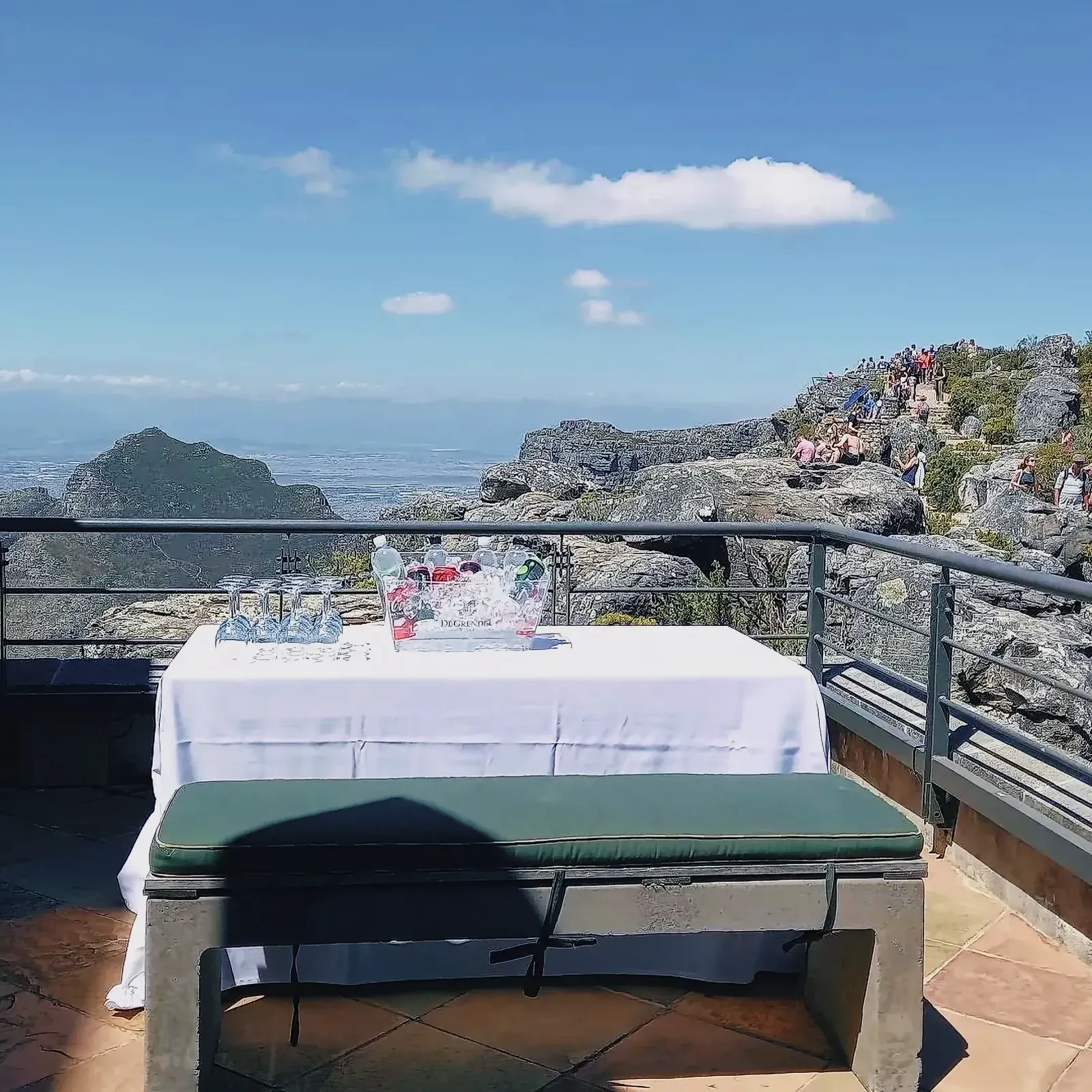

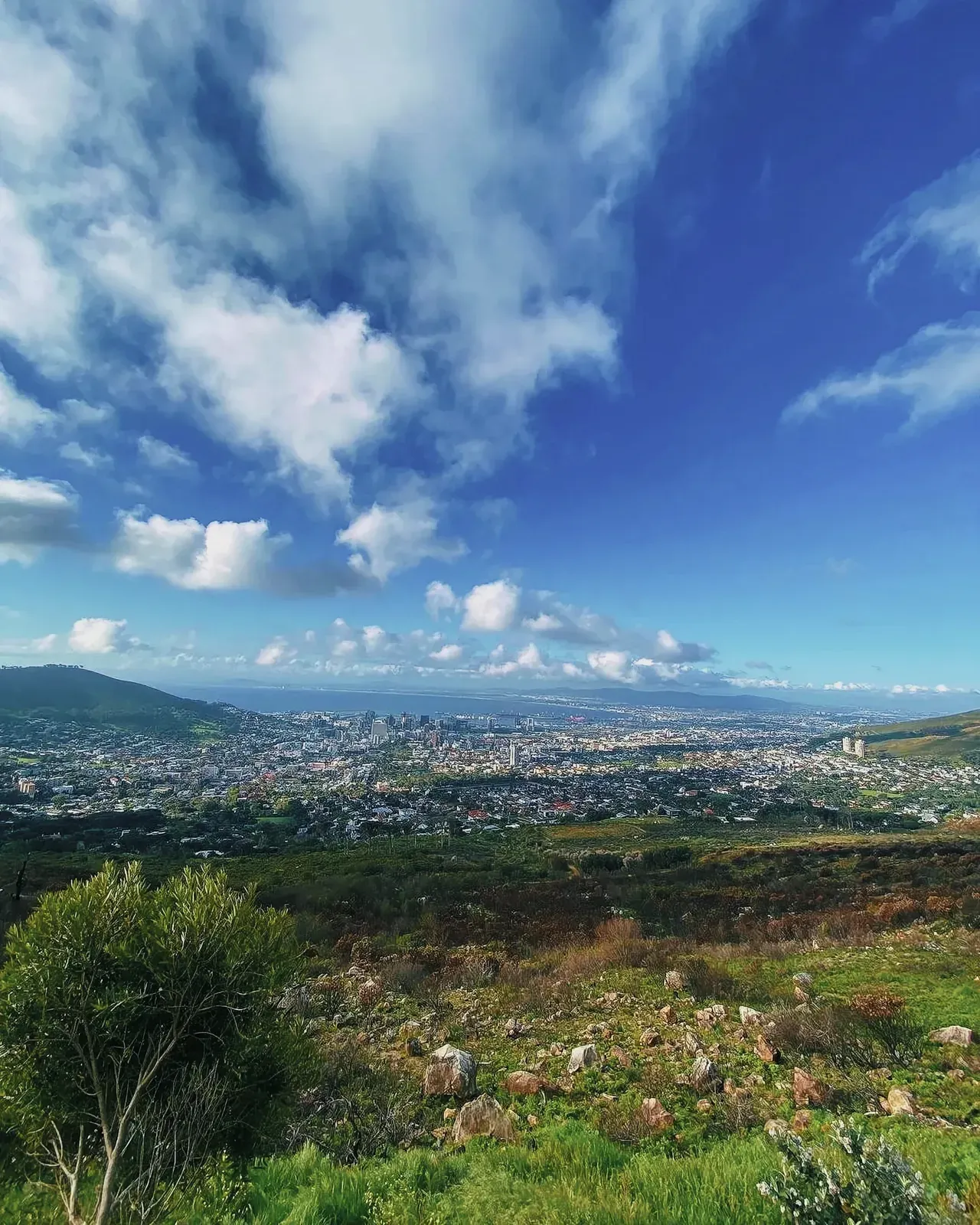
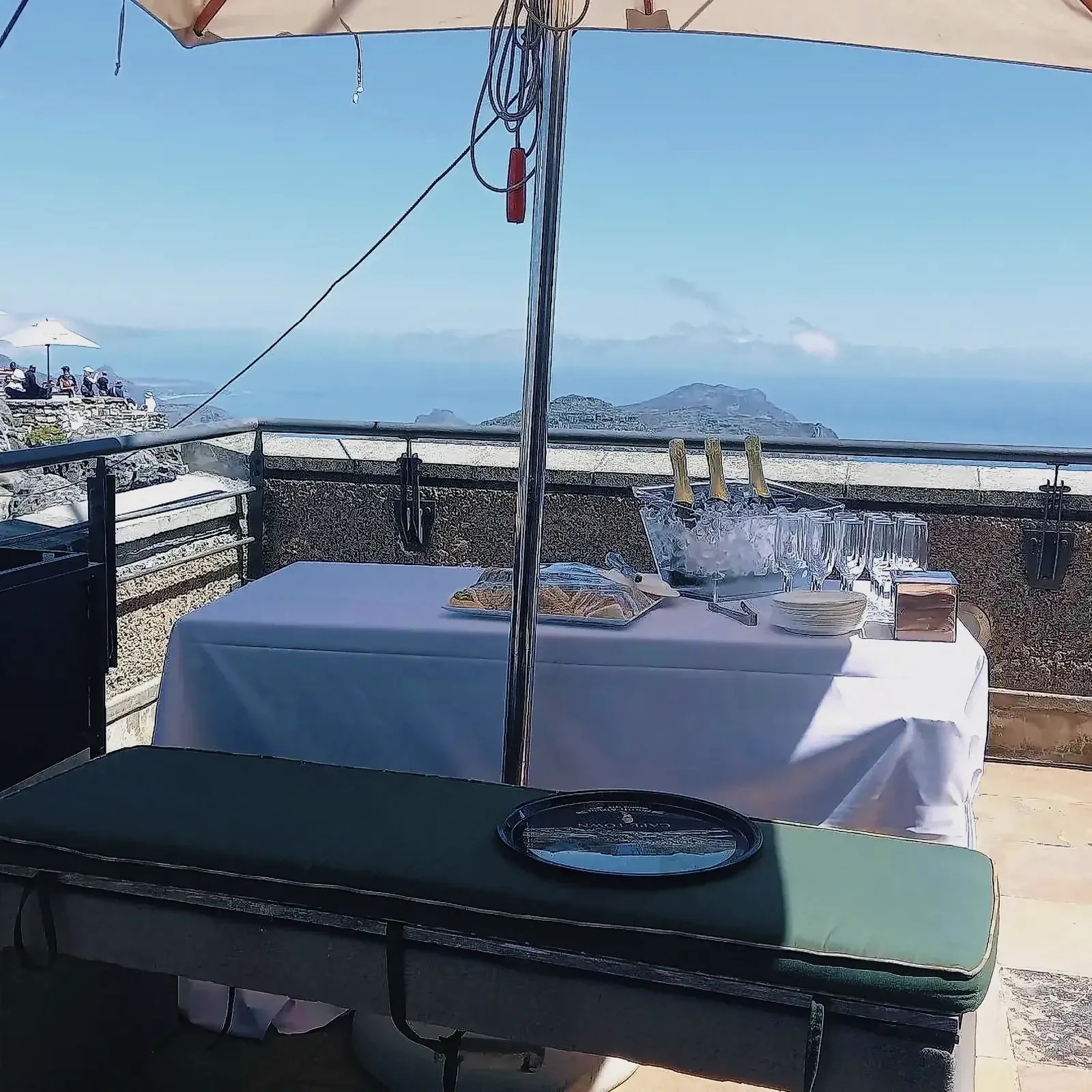
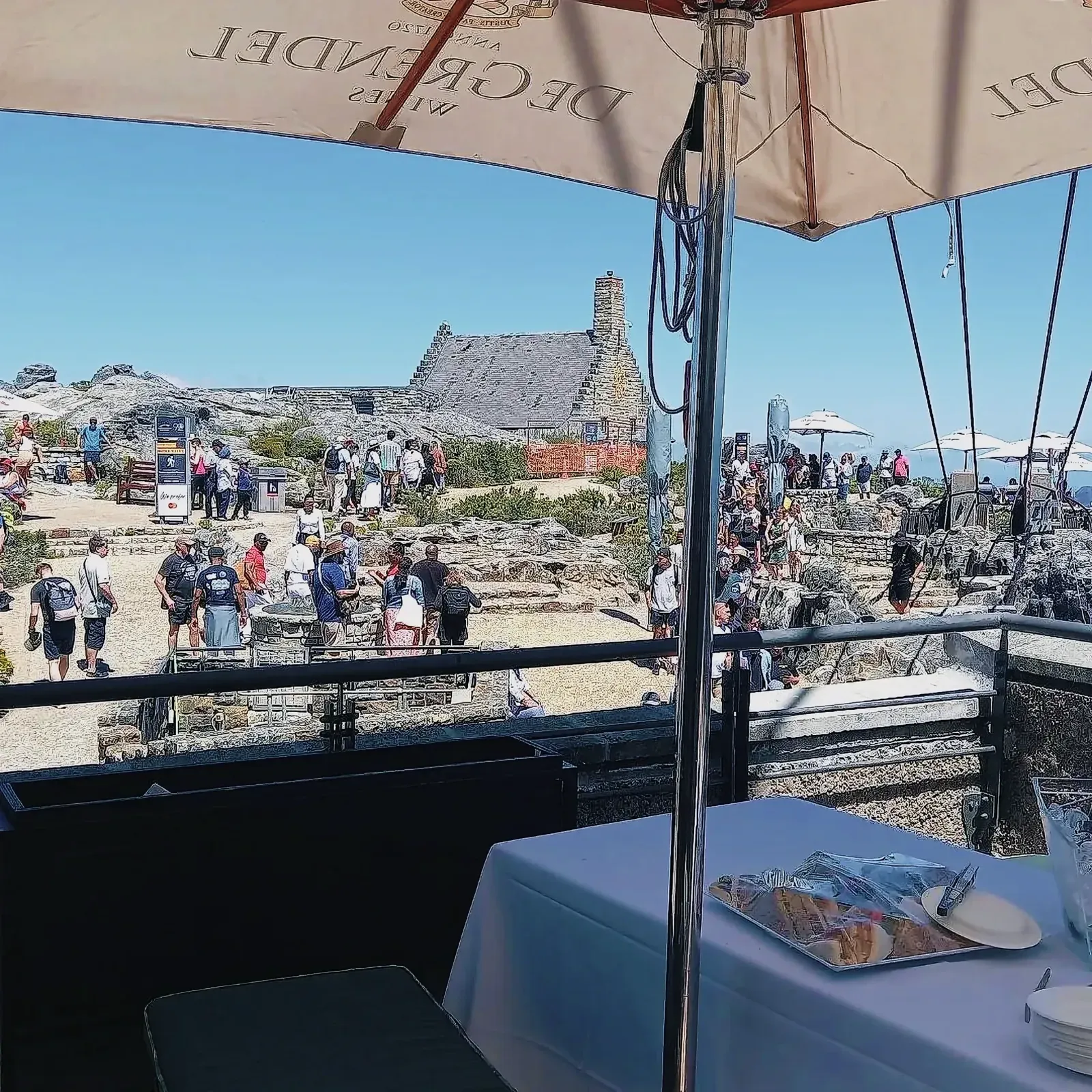

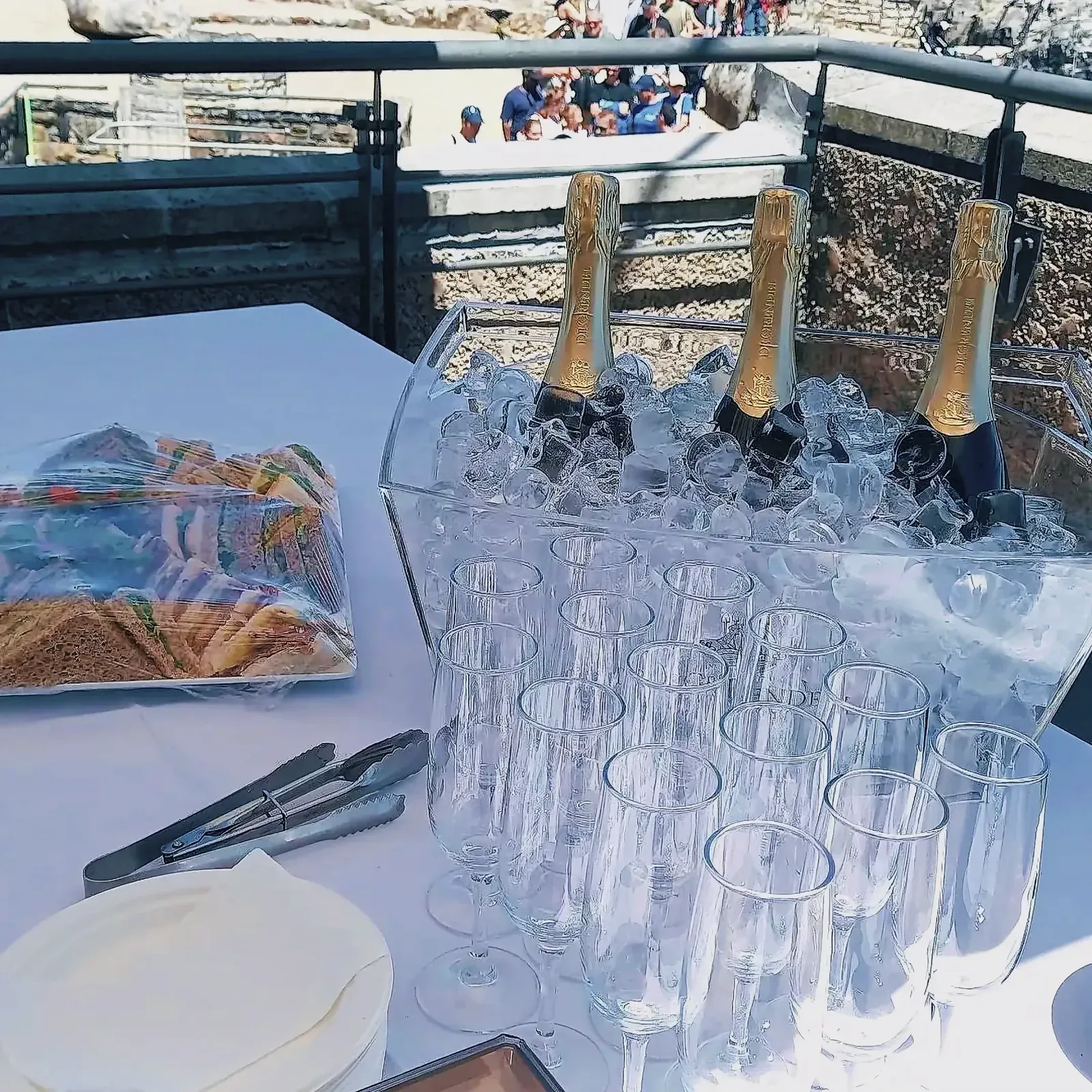
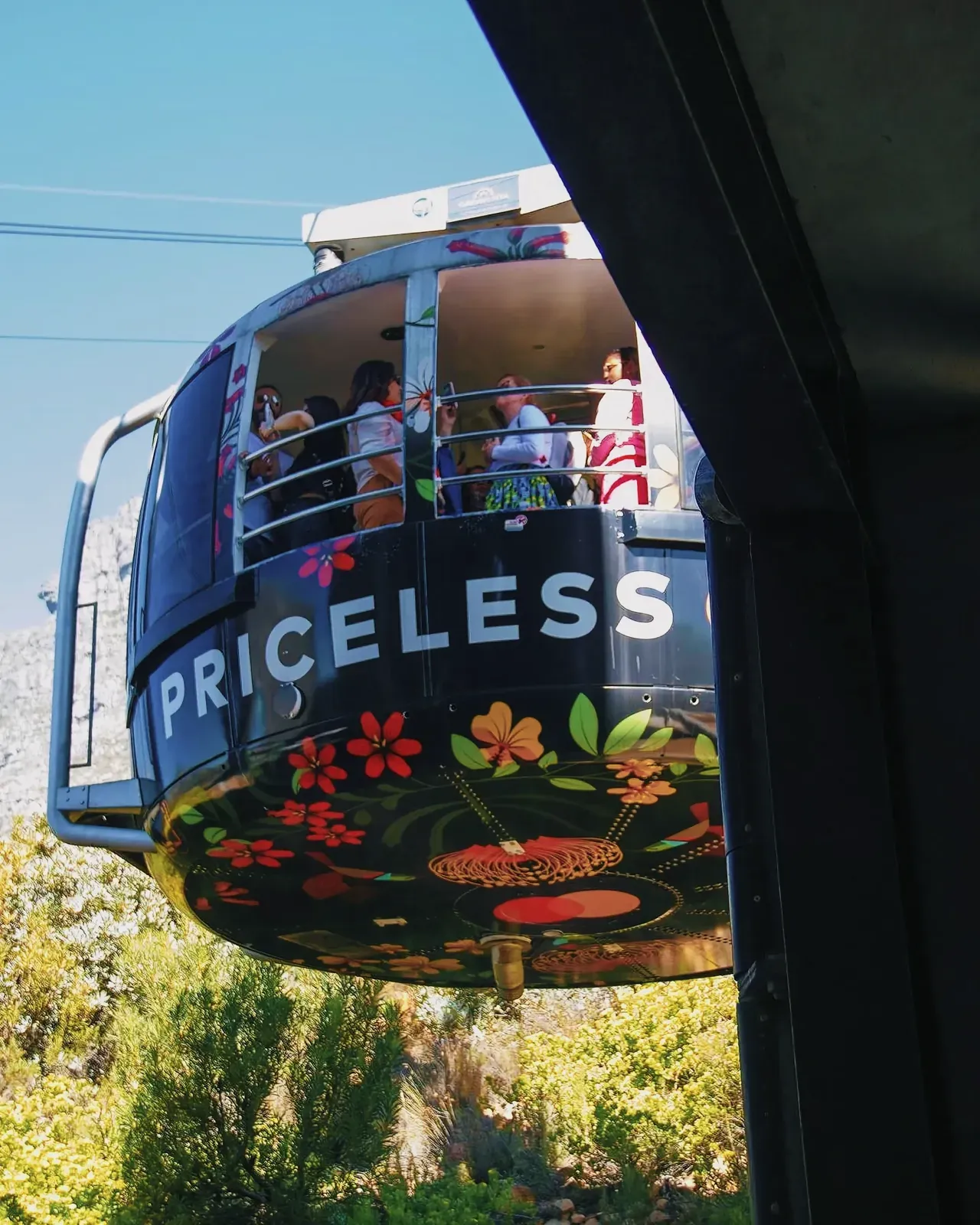

FAQ: Table Mountain and Its Aerial Cableway
1. What is Table Mountain’s significance to Cape Town and South Africa? Table Mountain is a beloved symbol of Cape Town and South Africa. It’s an iconic landmark on the southernmost point of Africa and stands proudly over the cityscape.
2. How many people visit Table Mountain through the Aerial Cableway annually? The Table Mountain Aerial Cableway transports an average of 909,000 visitors every year from all over the world.
3. How old is the Table Mountain Aerial Cableway? The Aerial Cableway celebrated its 86th anniversary on October 4th. However, ideas to access the mountain’s summit date back to the late 1870s.
4. Who proposed the idea of a cableway for Table Mountain? The concept of a cableway for Table Mountain was proposed by a Norwegian engineer named Trygve Stromsoe in 1926.
5. When was the Table Mountain Aerial Cableway officially opened? The Table Mountain Aerial Cableway was officially inaugurated on October 4, 1929.
6. How many upgrades has the cableway undergone and when? The cableway has undergone three significant upgrades over the years, specifically in 1958, 1974, and 1997.
7. What was unique about the 1997 cableway upgrade? The 1997 upgrade introduced cutting-edge Rotair cable cars with rotating floors, allowing passengers a 360-degree panoramic view of the surroundings during their ascent and descent.
8. How long does it take for the cable car to reach the summit? Currently, it takes about 5 minutes for the cable car to arrive at the summit.
9. How has Table Mountain been recognized internationally? In 2011, Table Mountain was designated as one of the New7Wonders of Nature after receiving over 100 million votes.
10. Is there any other natural wonder from the New7Wonders list situated within an urban setting? No, Table Mountain is unique among the New7Wonders of Nature as it’s the only one nestled within an urban environment.
11. What were the original plans for accessing the mountain’s summit before the cableway was proposed? Before the cableway, plans for accessing the mountain’s summit included a railway, more specifically, a funicular railway running through the Platteklip Gorge from Oranjezicht.
12. How many passengers can the modern Rotair cable cars hold? The modern Rotair cable cars can comfortably accommodate 65 passengers.
13. What is the safety record of the Table Mountain Aerial Cableway? The Table Mountain Aerial Cableway has maintained an accident-free record since its inception in 1929.
14. How often do the cable car rides operate? Weather permitting, cable car rides operate every 10 to 15 minutes.
15. What makes Table Mountain one of the most unique attractions in the world? Table Mountain’s unique status is amplified by its juxtaposition of natural brilliance amidst an urban setting, its rich history, and its prestigious recognition as one of the New7Wonders of Nature.

